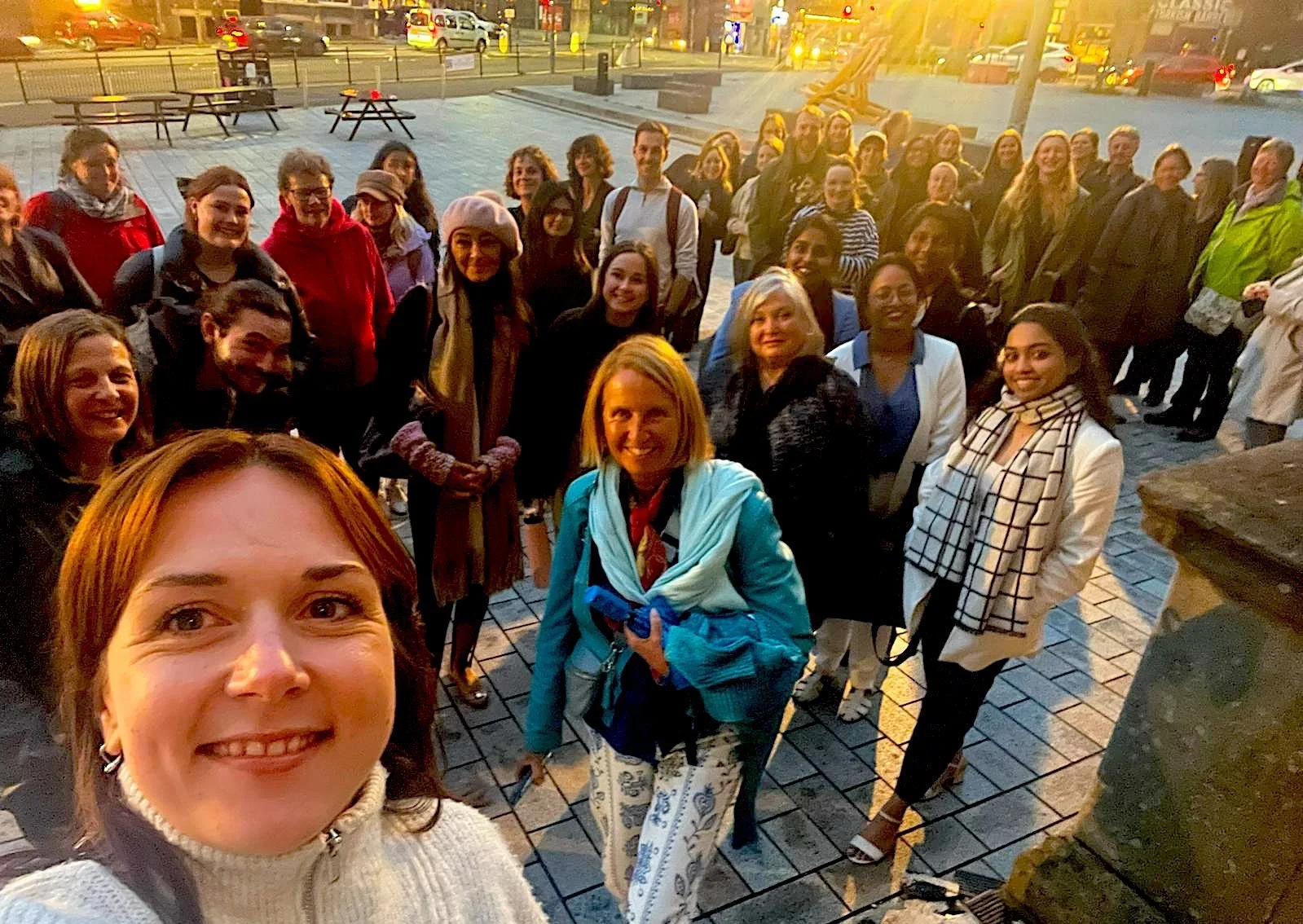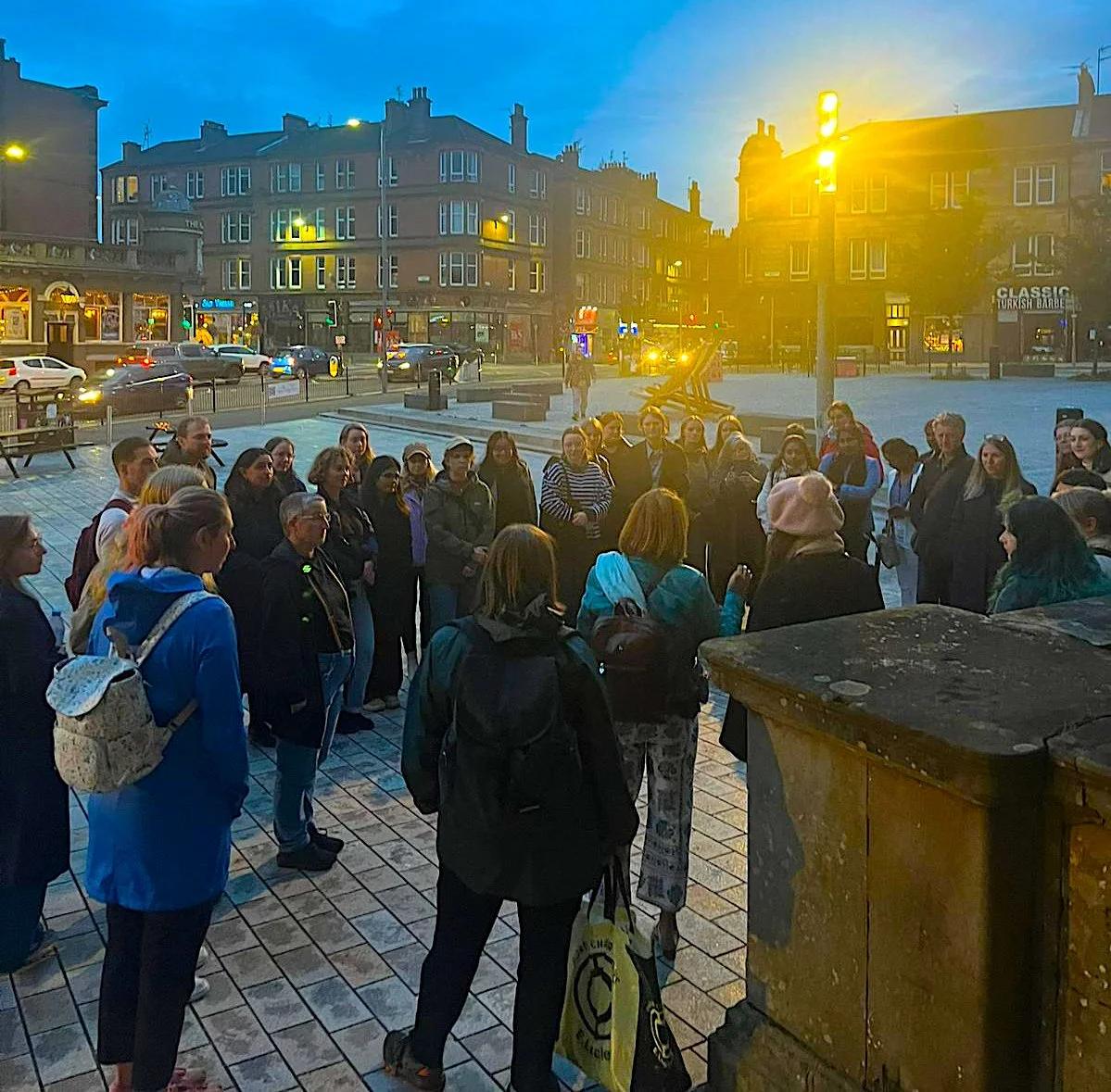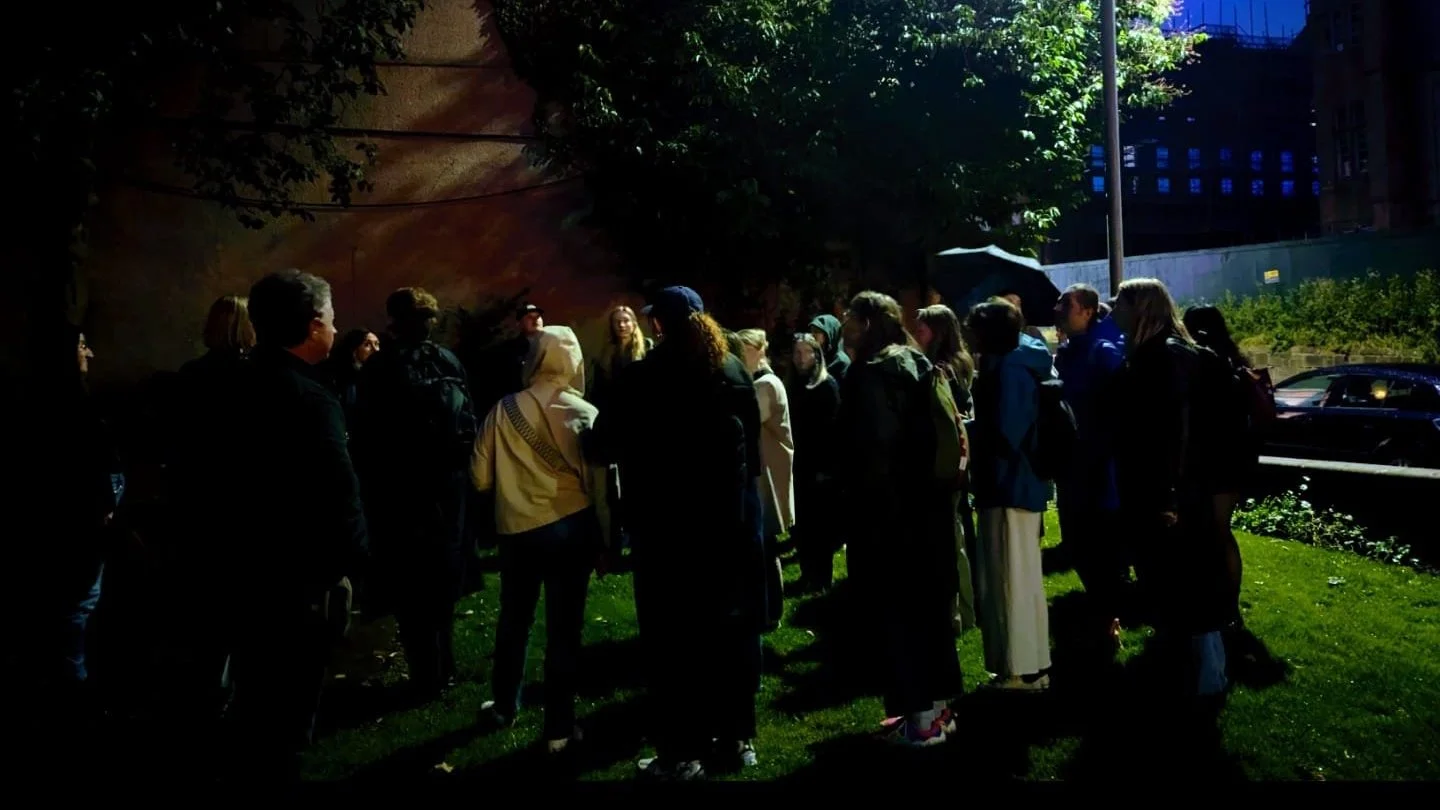A twilight gender sensitive walk to remember
Cllr Holly Bruce has initiated the motion of turning Glasgow the first Feminist City of UK
On a windy twilight evening in Langside, Glasgow, a group of Scottish Young Planners joined the local community to embark on a unique journey – a twilight walk starting at 8:30pm British Summer time – where they were encouraged to observe and understand the intricacies of the area through a gender-sensitive lens. Convened by the Scottish Government and Glasgow City Council, the walk was part of a three-part Design Class, which had taken place earlier that day, aimed to equip the early career professionals with practical skills to enhance their capacities in gender-sensitive placemaking.
The concept of regenerative observation was central to their task, emphasizing the importance of recognizing and nurturing the strengths of a place rather than merely identifying its shortcomings. As the group meandered through Langside’s streets and parks, their observations painted a vivid picture of the neighbourhood's character, challenges, and potential.
At Langside Halls, participants observed that the vibrant street market contributed to a strong sense of safety, community, and belonging, especially among younger residents. In contrast, concerns about safety arose when walking through the Queen’s Park walkway, where overgrown shrubbery obstructed natural surveillance, and a high fence created a caged-in feeling for passersby. Participants noted that when railings surround an area, it can feel inaccessible or difficult to escape. To address this, they suggested removing the railings between the boundaries of the park and the pavement to create a perception of openness and permeability between the green and the surrounding built environment.
Signage, or the lack thereof, was also highlighted as a key area for improvement. Participants noted the need for better-lit maps of the park, welcoming signs at entrances and exits, and more inviting signage throughout the area. While walking alongside the river, participants appreciated the soothing sound of the water and recognised that greenspaces don’t always need to be lit. They acknowledged the value of reserving some areas as dark spaces where all species can rest undisturbed.
Gender Sensitive Design Workshop
The aim of the design workshop was to provide a ‘live’ opportunity to immerse young planners in the practical application of Gender Sensitive Placemaking in their everyday roles whether working in development management, development planning or within the private sector.
Active travel was a focal point of their observations. The main road connecting Langside Hall to the High Street often plagued by speeding cars and noise, was deemed unpleasant for pedestrians and runners alike. Participants identified a series of transit calming measures to address these issues. First and foremost they recommended to establish a 20 mph speed limit and installing safer crossings, particularly at the monument and Cathcart Road, where the lack of secure pram crossings and overwhelming traffic create anxiety for cyclists and parents. Another suggestion involved narrowing the road at certain points, either by building out curbs or adding central islands, to slow down traffic. This could be achieved through permanent curb extensions or flexible bollards.
In contrast, the residential areas provided a more calming experience, with cars moving slowly and a more balanced relationship among road users—pedestrians, cyclists, and drivers. To further enhance these areas, slight, unexpected shifts in the lane direction were suggested. These subtle changes would reduce speeds even more by requiring drivers to make small steering adjustments, clearly signalling that these are people-centered roads. Additionally, residents were encouraged to manage their front garden bushes to further improve natural surveillance and enhance the "eyes on the street" that already contribute to the safety and community feel of the neighbourhood.
The group’s journey continued through the distinct areas of Shawlands, Battlefield, and Mount Florida, each with its own unique challenges. From the dark and crumbling Prospecthill Road to the neglected Holmlea Park, the group identified numerous opportunities for improvement. They envisioned a revitalized Holmlea Park with clear sightlines and a more inviting atmosphere, and safer junctions, particularly near local churches.
They highlighted Langside Library and its gardens as valuable community assets that could be better utilised with increased awareness among residents and perhaps more welcoming signage. From the vantage point of the library, participants observed the new development across the road and suggested fostering better interaction between these two community assets. They noted that the space between the new development and the road could have been better preserved. To address this, participants proposed enhancing the continuity between the new development, the library, and the surrounding areas by introducing meandering green routes and artwork. These pathways would weave through and around the vegetation of the Library and the new development, ultimately connecting with the Park, making the edges between these spaces more dynamic and inviting.
Despite some challenges, participants recognised many strengths of the area. They admired the care and attention shown in small details, such as bollards painted by primary school children, which gave the area a sense of being cared for. They praised the peaceful White Cart Waterway, a tranquil alternative to the busy roads, and saw potential in creating clearer pedestrian routes through spaces like the Celeros factory housing.
As the twilight deepened, the young planners and community members left Langside with a renewed understanding of the importance of gender-sensitive placemaking. Their observations and suggestions reflected a commitment to creating spaces that are greener, slower, safer, wilder, more interconnected and welcoming for all. The evening walk was more than just an exercise; it was a meaningful step toward further embedding gender-sensitive principles into Langside.
Contributed to this text Cllr Holly Bruce, Susie Sterling and May East
Deep observation grounded in the bio-cultural-spatial uniqueness of Langside



